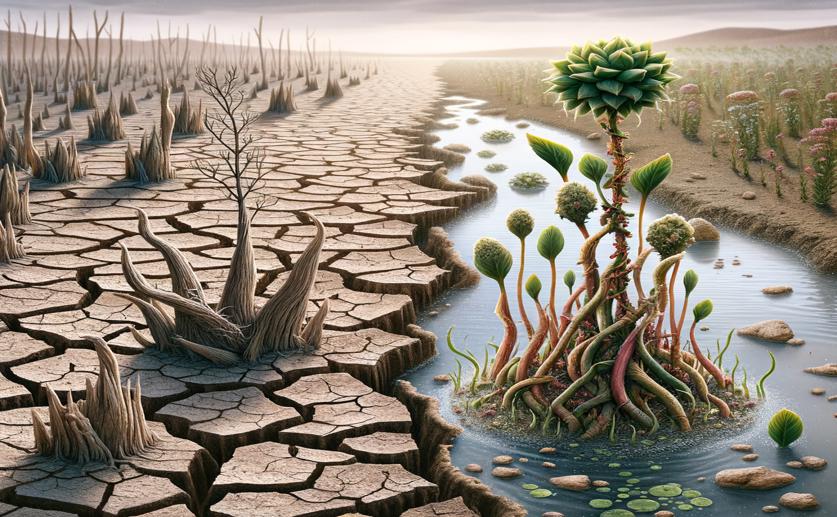
How Drought Length Affects Two Types of Pondweeds with Different Growth Patterns
Jenn Hoskins
1st June, 2024

Image Source: Natural Science News, 2024
Key Findings
- The study by Maastricht University examined how two Potamogeton species cope with drought conditions
- Both species showed resilience to short-term droughts (1-5 days) but had high mortality after 15 days
- Potamogeton nodosus, with aerial leaves, adapted better to drought than the fully submerged Potamogeton perfoliatus
EnvironmentEcologyPlant Science
References
Main Study
1) The impact of drought duration on two Potamogeton species with different growth forms
Published 31st May, 2024
https://doi.org/10.1007/s00027-024-01089-4
Related Studies
2) Comparative studies of thermotolerance: different modes of heat acclimation between tolerant and intolerant aquatic plants of the genus Potamogeton.
3) Europe-wide reduction in primary productivity caused by the heat and drought in 2003.
Journal: Nature, Issue: Vol 437, Issue 7058, Sep 2005
4) Stress Memory and the Inevitable Effects of Drought: A Physiological Perspective.
5) The physiology of plant responses to drought.



 18th May, 2024 | Jenn Hoskins
18th May, 2024 | Jenn Hoskins